Click on any picture to enlarge. Click the arrow (top left) to return.
I arrived at the CMC site in Rowans Way in Bognor Regis a couple of weeks ago. A previous booking for four weeks earlier had to be cancelled because of an unexpected medical emergency, losing me the £30 deposit. I arrived just as check-in opened at 13.00 hours and, as requested, they directed me to a pitch close to the facilities which they had reserved for me.
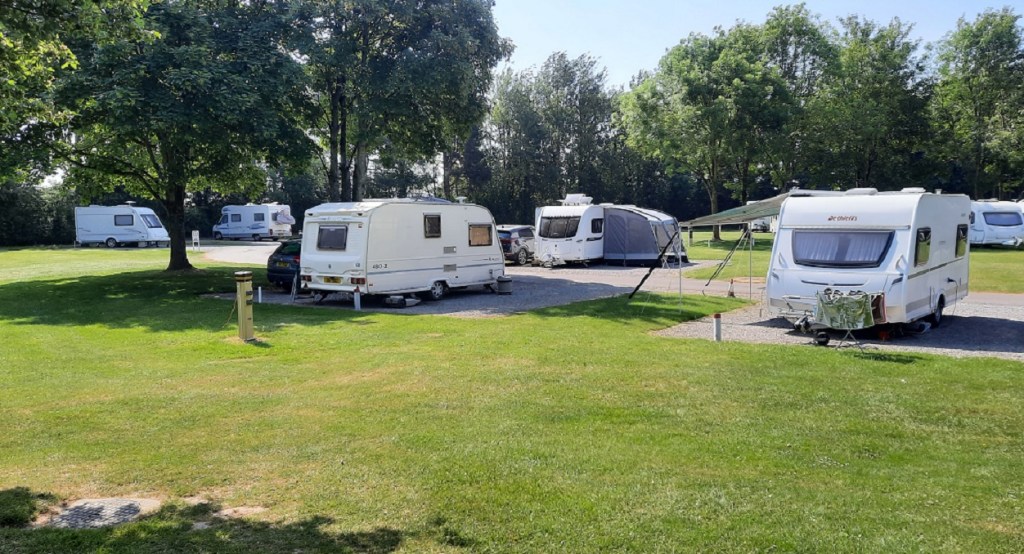
Fortunately, the hard-standing pitch was fairly level so no ramps were needed. I spent a leisurely afternoon putting down legs, connecting electricity and fetching and plugging in a water supply. At 93 years old, these jobs take longer than they once did, so it was a relief when at last I could unpack a sun lounger and settle down in the shade of a nearby tree.
0-0-0-0-0-0-0-0-0-0-0-0
For my first day visit, I drove the 12 miles or so inland to Singleton to visit the Weald & Downland Living Museum. It’s a large site which has become home to a collection of historic buildings from towns in the south-east of England, which having been threatened with destruction, were dismantled and rebuilt in their new home. It also showcases heritage farming trades and crafts. It is from this museum where the BBC film their television show The Repair Shop.

As I toured the site, I came across this horse-drawn caravan.

The information panel recorded that it was acquired and restored in 2003, belonging “to an eccentric old lady, a Miss Udal who although didn’t travel with her van, had lived in it near Rye for over 40 years”.
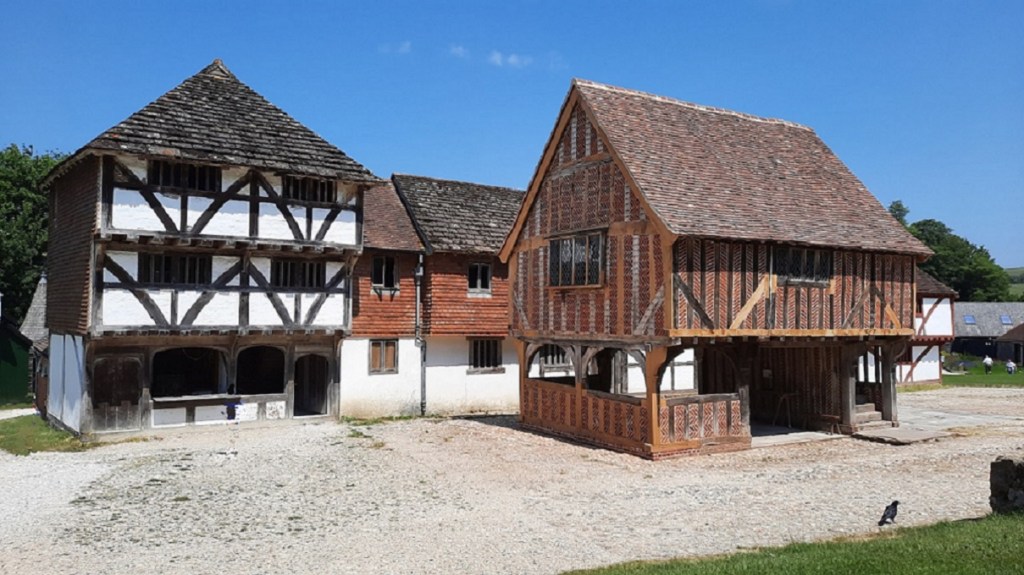
The building on the right is the Medieval Market Hall from Titchfield, whilst on the left-hand side is a Chemists shop dismantled in 1956 from Horsham High Street.
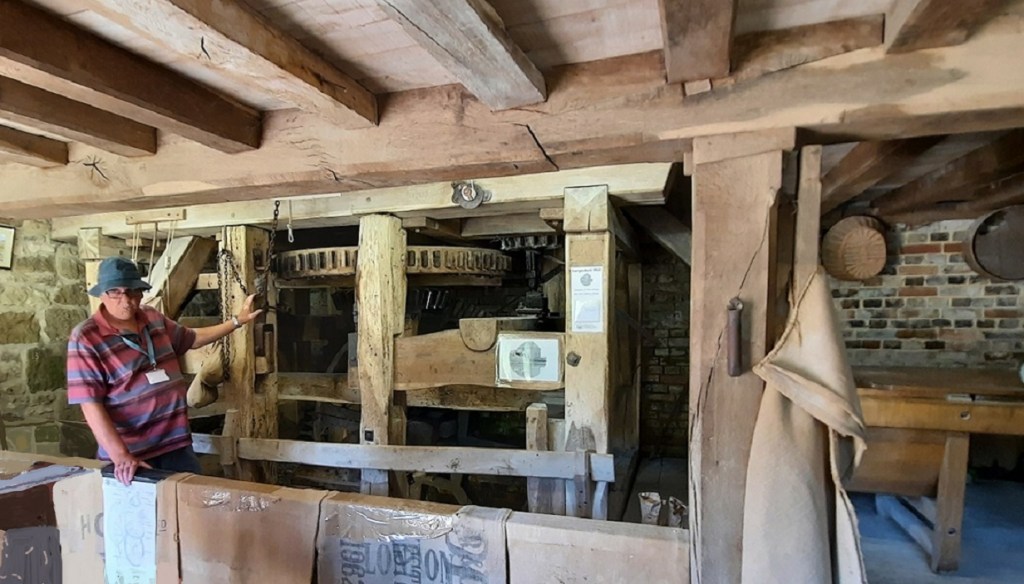
This is the interior of the flour mill which is still in working order producing wholemeal flour.
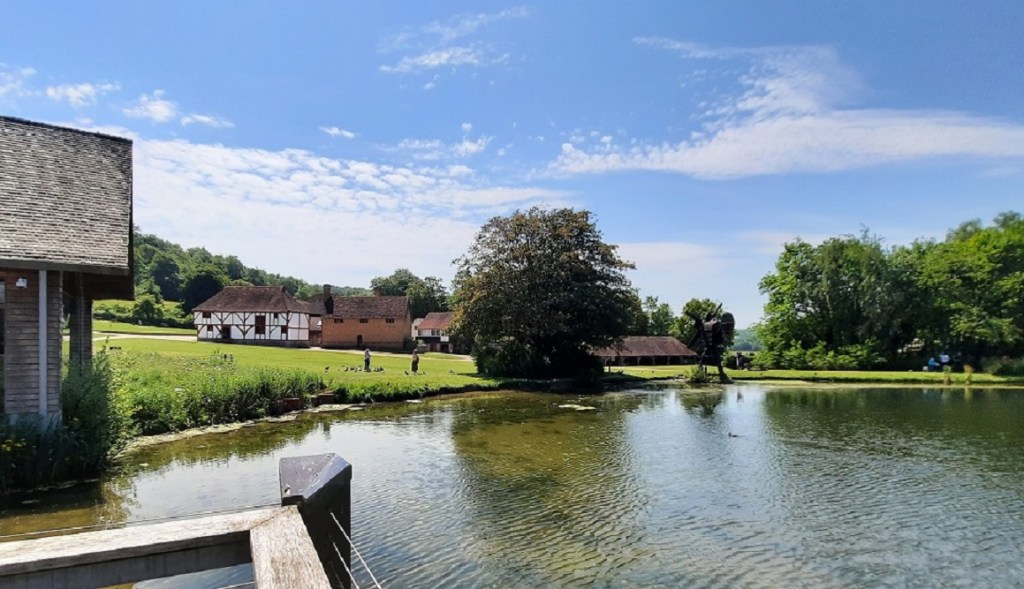
A view across the village pond.
0-0-0-0-0-0-0-0-0-0-0-0
Today I drove the 20 miles up onto the South Downs to visit the National Trust property at Uppark Park, close to Petersfield. Rather than take the motorway and A3, I chose the lovely cross-country route. The house was built around 1690 but was sold some fifty years later to Sir Matthew Fetherstonhaugh and his wife who redecorated and collected much of the present items on display in the house.
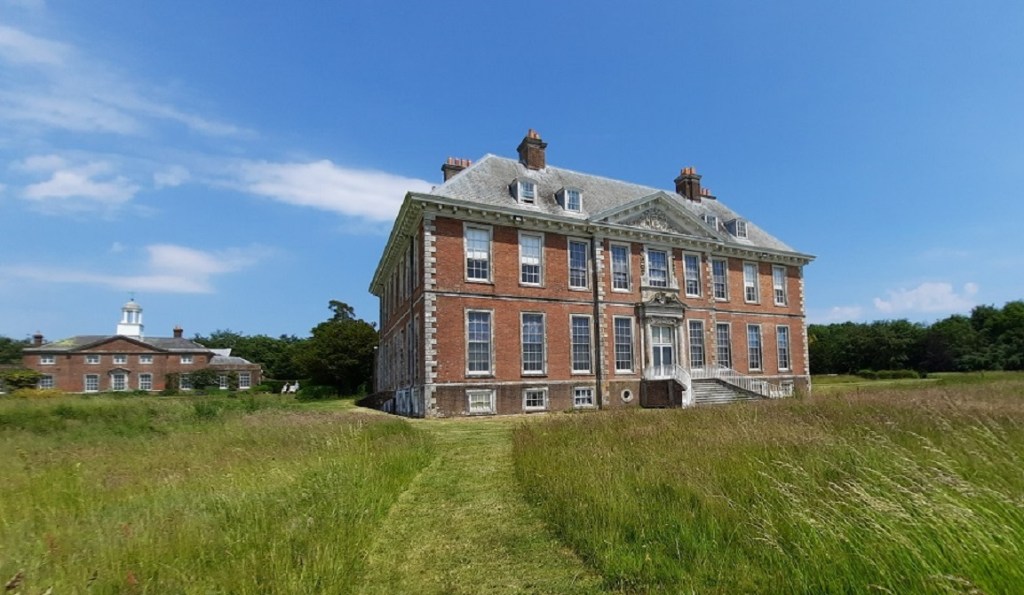
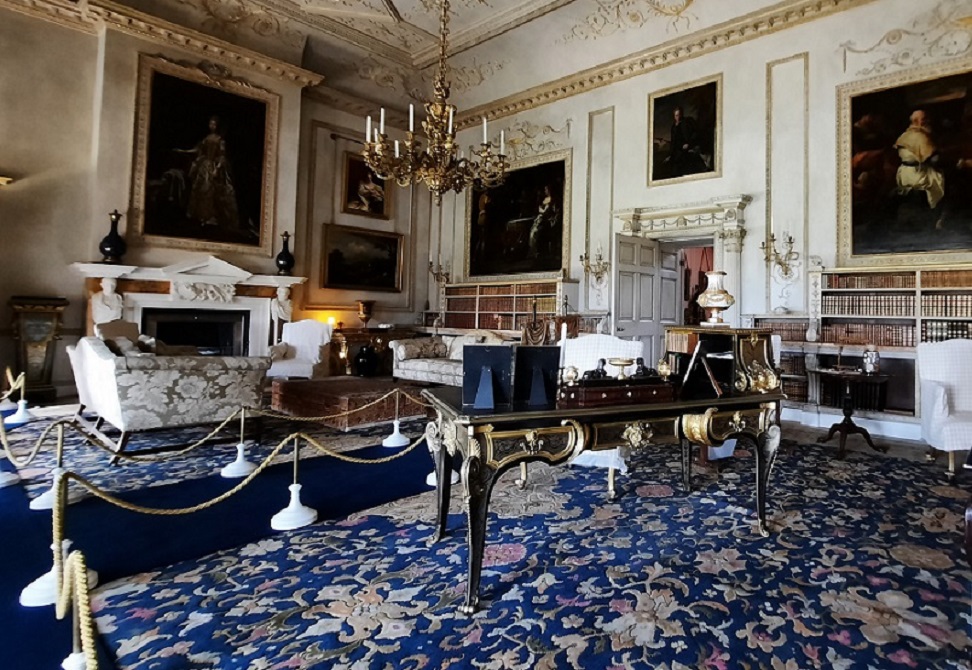
Their son, Sir Harry continued to add to the collection. At the age of 71, Sir Harry married the estate’s dairymaid who, after his death continued to maintain and improve the property. In 1954 descendant members of the family negotiated with the National Trust to take the property into their care.
0-0-0-0-0-0-0-0-0-0-0-0
Today’s drive was a 16-mile drive inland to the Sussex market town of Petworth. I wanted to visit the Petworth Estate which consists of a Grade 1 listed country house rebuilt in 1688 by the 6th Duke of Somerset. In later years the house became the southern home of the Earls of Northumberland – the Percy family.
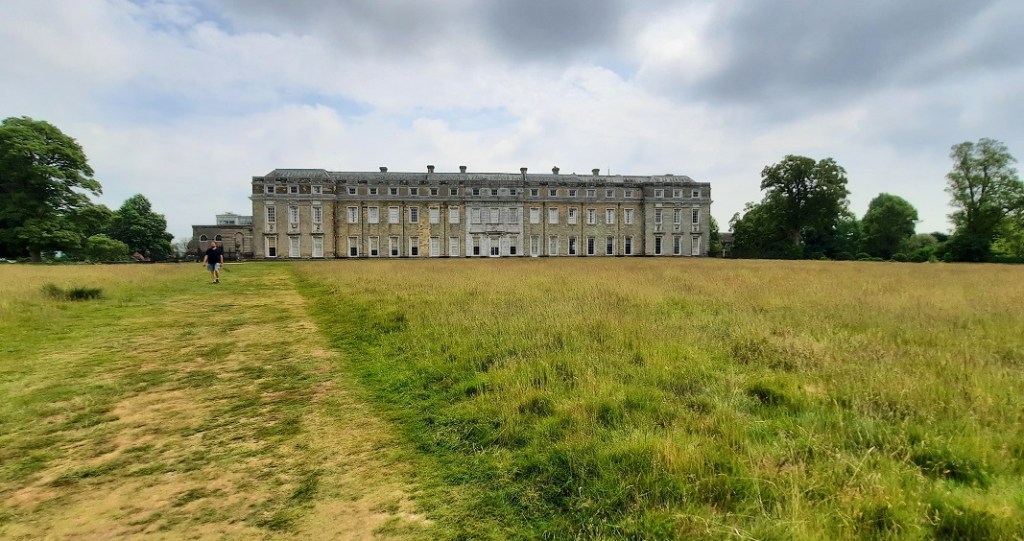
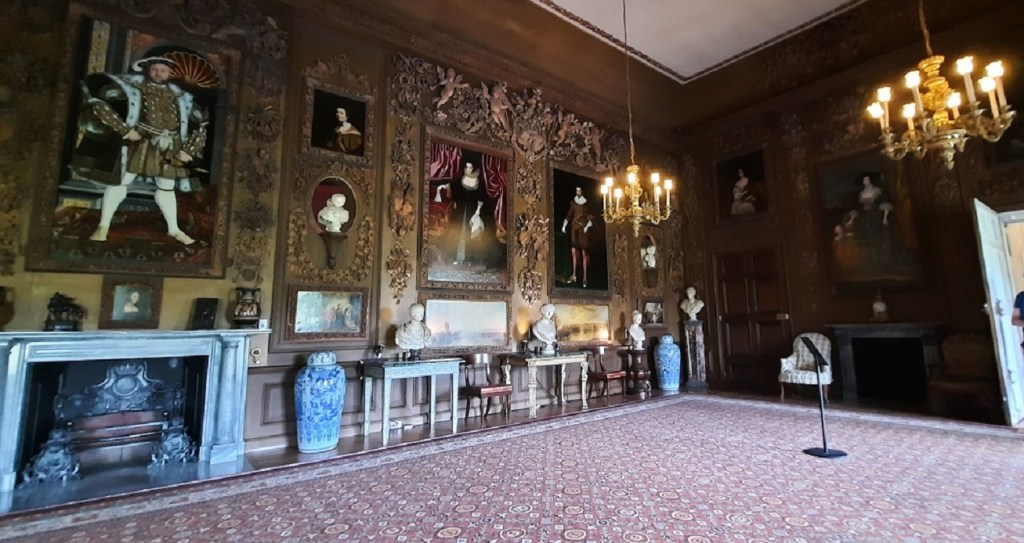
Petworth House is famous for its intricate Grinling Gibbons wood carving, and also its extensive art collection. Amongst the collection is one of the copies of the Hans Holbein painting of Henry VIII.

The house looks out onto a huge deer park originally landscaped by Capability Brown.

0-0-0-0-0-0-0-0-0-0-0-0
It was a longer 40-mile drive today because I wanted to visit Wakehurst Place which is a house and botanic garden owned by the National Trust but used and managed by the Royal Botanic Gardens, Kew. The mansion was built in 1590 to an E-shaped plan. But sadly, nothing can be seen of the mansion because, for the next two years, the entire building will be swathed in scaffolding and plastic sheeting whilst renovations are carried out, including replacing the entire roof.

The Elizabethan Mansion swathed in scaffolding and plastic sheets.
However, there was plenty to see in the extensive gardens.


0-0-0-0-0-0-0-0-0-0-0-0
I made an early start along the heavily congested M27 to Portsmouth. My destination was the Historic Dockyard. There is no parking available within the Dockyard, so visitors need to rely on Council car parks. Fortunately, because it was early in the day, I found a vacant street parking bay. Unfortunately, it was some distance from the entrance, so I unloaded my mobility scooter and took to the pavement. Admission price depends upon the number of attractions one wishes to visit. I had opted for them all so the entry price was an eye-watering £43 (as an OAP) Not quite so hurtful for me as I bought with Tesco vouchers. The first port of call was to climb aboard HMS Warrior.

This is an iron-clad battleship built in 1860 on the orders of Queen Victoria after hearing the news that newly built ships were being launched by Napoleon Bonaparte. Sadly I was unable to negotiate the steep ladder with rope hold down to the lower gun deck.
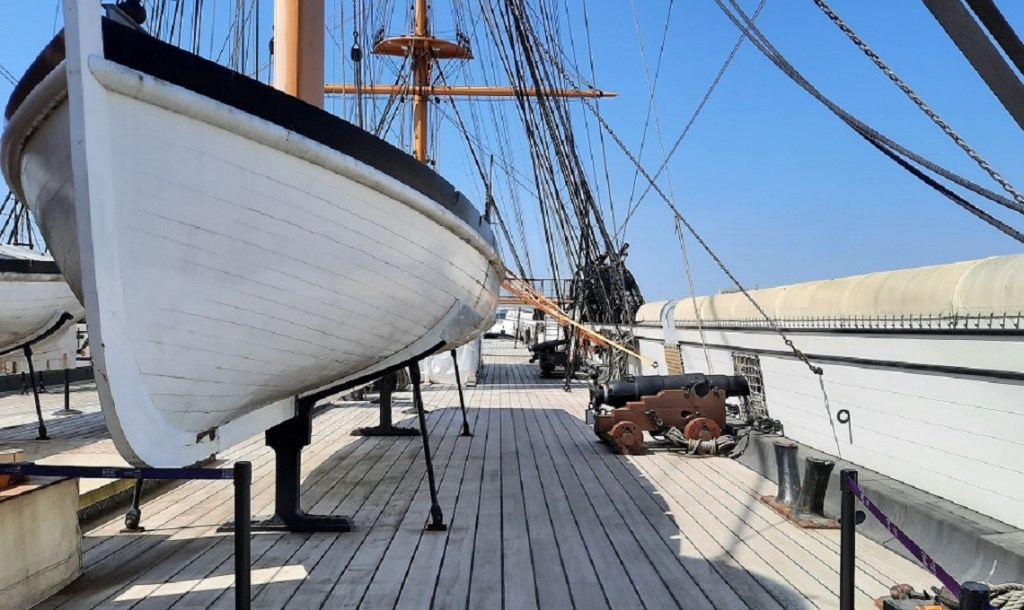
Next, I moved on to Boathouse 4 which was the last boathouse built for the Royal Navy. From a high platform built around the perimeter walls, there is a view over the floor of the workshop.
Then I came to HMS M33 in a dry dock.

This ship was built in 1915 and saw service in the Mediterranean during the First World War. She took part in the bombardment during the Gallipoli campaign.
And then I arrived at The Victory. What a disappointment. All except the stern was covered with scaffolding and plastic sheets. Both Inside and out.

Although a lift had been installed giving access to three different levels, each level was the same. A corridor of plastic and steel with some rather obscure peepholes. Fortunately, the stern was visible. The woodwork and carving were amazing.
As I toured the dockyard it was interesting to see that Thomas Telford spent a couple of years here as a 27-year-old.

Finally, I moved on to the museum which has been created to display the remains and the thousands of artefacts which have been rescued from the Solent after the raising of the Mary Rose. She was an English warship built in Portsmouth during the reign of Henry V111 that often served as the fleet’s flagship. In 1545 whilst King Henry watched a sea battle between ships of the French navy fighting with English ships, the Mary Rose capsized and sank to the seabed, killing most of the crew and soldiers on board. The wreck was raised in 1982 and later put on display in the specially built museum.
0-0-0-0-0-0-0-0-0-0-0-0
On another day, I ventured along the M27 towards Fareham to visit Porchester Castle. Even in Roman times, Porchester was built as a port situated at the head of the Solent. So important was the area that the Romans built one of their chain of forts that we now refer to as the Saxon shore forts.
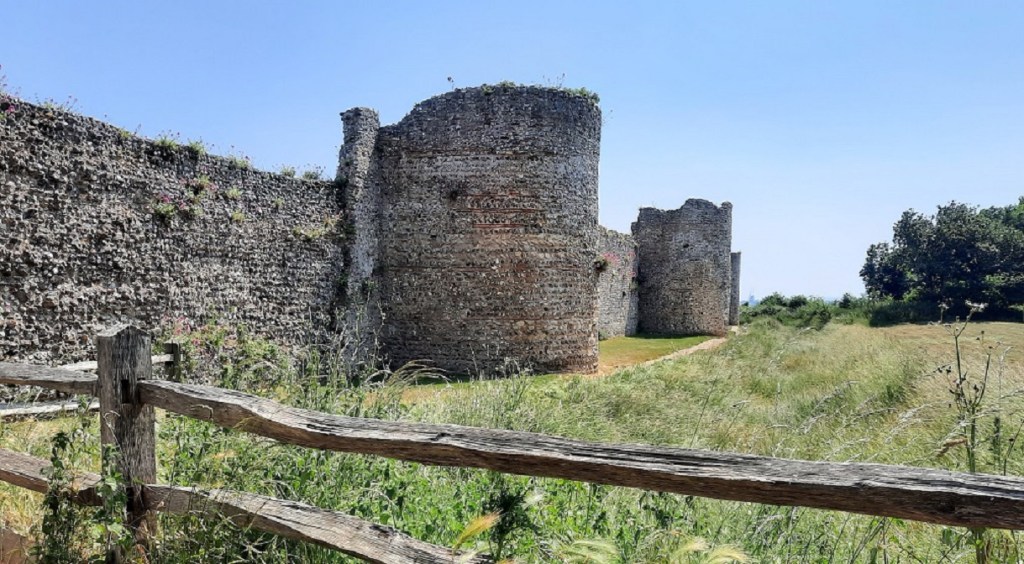
After the Norman Conquest, the outer Roman Walls became the walls for the outer bailey of a castle with a new Keep and buildings built into one corner of the old fort.

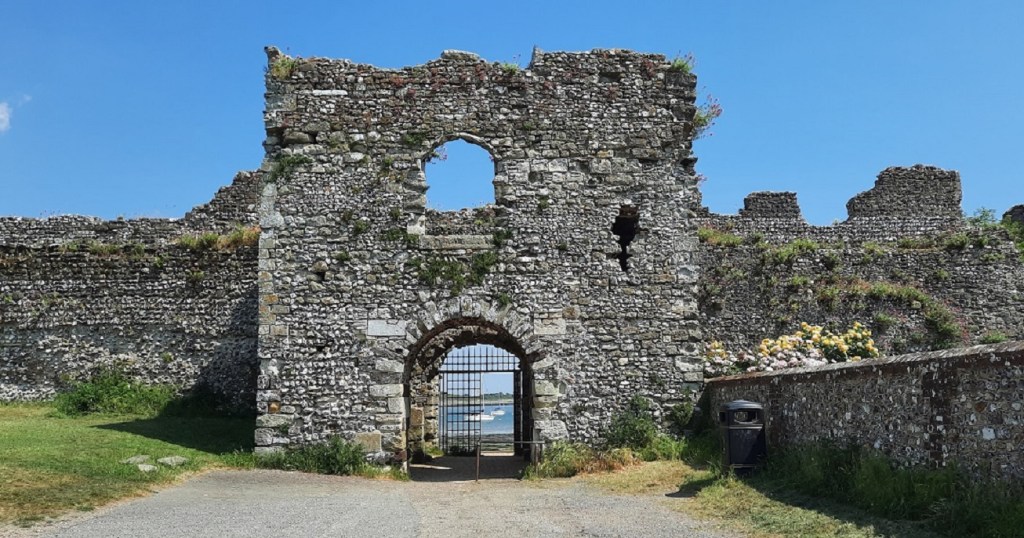
It was from here that Henry V gathered together his troops before embarking to France in 1415. Having landed at Honfleur, he set out to march on Paris, but met resistance and turned north to cross the Somme and head for Calais. He found himself trapped at Azincourt where he was forced into battle.
0-0-0-0-0-0-0-0-0-0-0-0
I decided on a visit to Chichester today. The drive there was heavily congested but I was fortunate to find a parking bay quite close to the cathedral. I unloaded my scooter and set off towards the crowds. As I turned into one of the main thoroughfares I was met with the view of the Chichester Cross.

This is an elaborate market cross built in the Perpendicular style standing at the intersection of the four main streets. According to its inscription, it was built between 1477 and 1503 by the then-bishop of Chichester.
As I admired the Market Cross, the Cathedral was behind me and over to the right. It was there that I went next. A monastery and cathedral was founded by St. Wilfrid in 681AD out on the coast at Selsey, and that was to become the first cathedral but after the Norman Conquest in 1066, it was decreed that Cathedrals should be built in populated areas so the Norman bishop ordered that the monastery would move and construction started during 1075 in the old Roman City of Chichester. By 1108 it was ready for consecration. But by 1187 the building was destroyed by fire and needed rebuilding. Around 1400 the spire, the cloisters and the free-standing bell tower were added.
In 1530 a huge painting was added. It measures 14ft by 32ft and is painted on oak planks.

It depicts two separate paintings telling the story of the Cathedral together with a series of portraits featuring the then-current monarch – Henry VIII. Close by, under a glass floor, there can be seen part of a Roman mosaic floor discovered during later repair work.
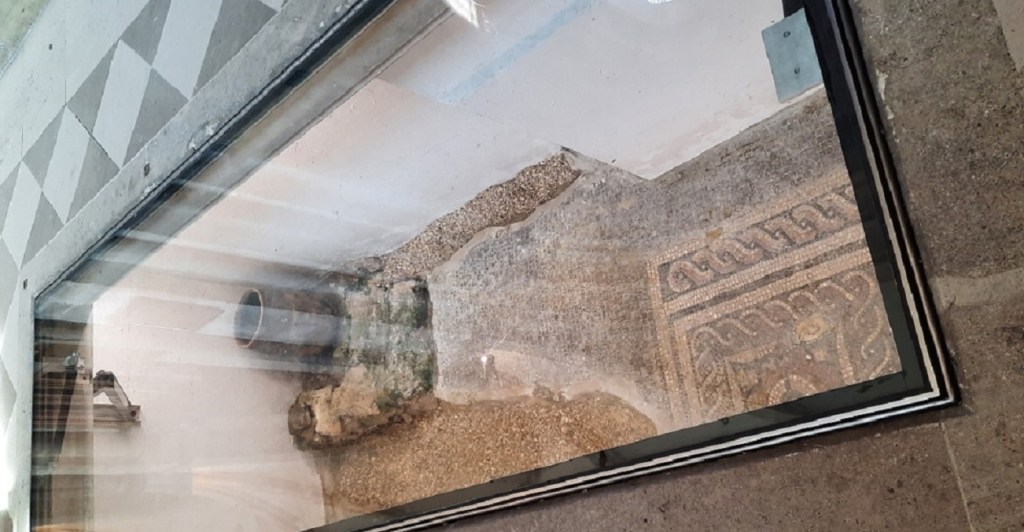
In 1861 the Tower and Spire collapsed. Rebuilding was overseen by Sir George Gilbert Scott and took the next five years to reconstruct.
And even today, much of the Cathedral is enveloped in scaffolding and plastic sheets with maintenance work being carried out. Thus the centre of the Nave is cordoned off with “Men working overhead” warnings being displayed.
From the Cathedral my tour leads me through the Cloisters and into the Bishops Palace Gardens.


Since the time was just around 1pm, many of the city’s working population had come into the Gardens for a lunch break seeking out the benches shaded from the fierce sunshine.

Having had a late lunch, I was ready to face the traffic and return to the caravan, however, since it was only a few miles away, I decided to visit the Roman Palace Museum at Fishbourne.
This site has been known about since the early 1800s but it wasn’t until 1961, when Portsmouth Water Co began to lay a new water main was it realized the huge area of the site. Since then extensive excavations have been carried out and the museum built over the mosaic flooring.
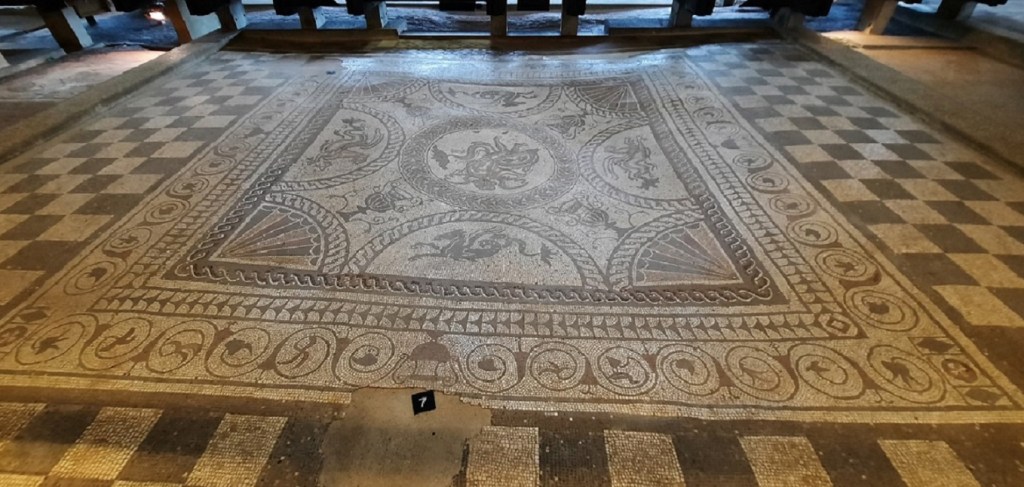
Archaeologists estimate that the building commenced as early as 75AD and over the next 200 years, the site gradually increased in size, until finally in 270AD the Palace was destroyed by fire when it was abandoned.
0-0-0-0-0-0-0-0-0-0-0-0
On my last day, I wanted to visit the remains of what was, from the 1400s till the 1860s, the Parish Church of Church Norton, a rural location close to Selsey. The church, which once stood here remained in use until the mid-1860s when it was decided that it should be moved nearer to Selsey. So the church was taken down stone by stone and transported to its new position. However, it was decided that the chancel would remain as a chapel, and be rededicated to the founder of the monastery, St. Wilfrid.

I ended the afternoon with a late lunch on Bognor Beach.
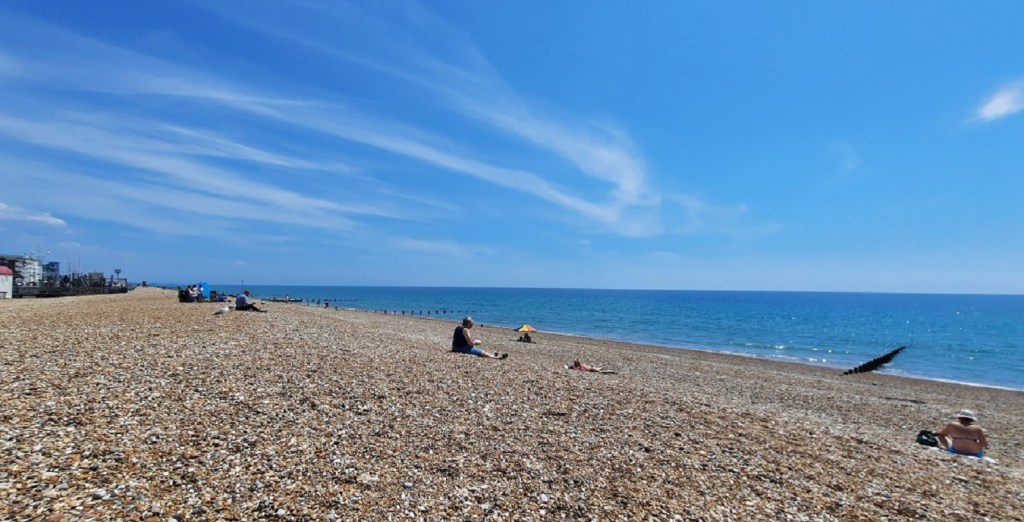
0-0-0-0-0-0-0-0-0-0-0-0
It was leaving day today. By 11am I was packed and ready to head for home. During the entire stay, the weather had been brilliant with only about 30 minutes of rain during the entire time.